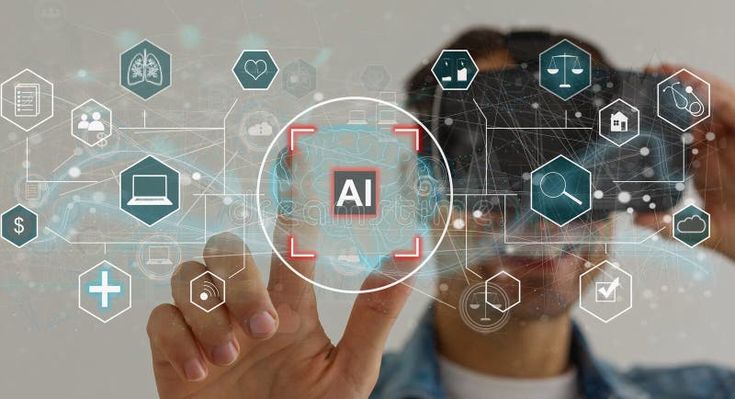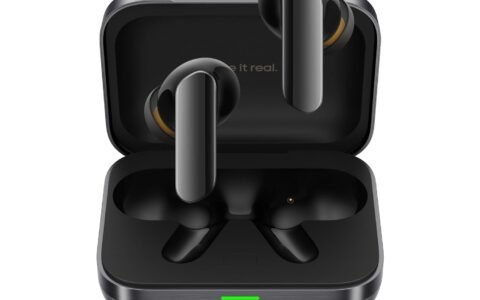
Artificial Intelligence (AI) has rapidly evolved from a futuristic concept to a tangible part of our daily lives. Once confined to the realms of science fiction, AI is now seamlessly integrated into various aspects of everyday living, enhancing efficiency, convenience, and even our health. From the way we interact with our homes to how we travel and receive medical care, AI is at the forefront of a technological revolution.
This article delves into how AI is being woven into the fabric of our daily routines, exploring its impact on smart homes, transportation, and healthcare, and how these advancements are shaping the future.
AI in Smart Homes: Revolutionizing Domestic Life
The concept of a “smart home” has been around for a few years, but with the integration of AI, these homes are becoming smarter, more intuitive, and increasingly autonomous. AI in smart homes is designed to create a seamless living experience, where technology anticipates our needs and automates everyday tasks.
1. AI-Powered Voice Assistants
One of the most common examples of AI in smart homes is the use of voice assistants like Amazon’s Alexa, Google Assistant, and Apple’s Siri. These AI-driven platforms are more than just voice-activated tools; they are becoming central hubs for home automation. By learning user preferences, these assistants can control lighting, adjust thermostats, manage home security systems, and even order groceries.
For instance, AI can learn when you typically wake up and adjust your smart thermostat to your preferred morning temperature. It can also analyze your daily routines to suggest adjustments that save energy, such as turning off lights in unoccupied rooms or lowering the heat when you leave for work.
2. Smart Appliances and AI Integration
AI is also embedded in various home appliances, from refrigerators that track your food inventory to washing machines that adjust their cycles based on the weight and type of laundry. Samsung’s Family Hub refrigerator, for example, uses AI to suggest recipes based on the ingredients available inside, while LG’s ThinQ technology enables appliances to learn user habits and optimize performance accordingly.
These innovations not only make everyday tasks more manageable but also contribute to energy efficiency and sustainability by reducing waste and optimizing resource use.
3. Home Security and Surveillance
AI-driven security systems are transforming how we protect our homes. Modern security cameras, such as those from Ring and Nest, use AI to recognize familiar faces, detect unusual activity, and even differentiate between people, animals, and inanimate objects. This reduces the number of false alarms and enhances the overall security of your home.
Moreover, AI can integrate with other smart devices to create a comprehensive security network. For example, if a security camera detects an intruder, it can trigger the smart lights to turn on and notify the homeowner via their smartphone. This real-time, AI-driven response system is revolutionizing home security, making it more proactive and effective.
AI in Transportation: Driving the Future of Mobility
The transportation sector is experiencing a seismic shift with the integration of AI, fundamentally changing how we move from one place to another. From autonomous vehicles to intelligent traffic management systems, AI is making transportation safer, more efficient, and more accessible.
1. Autonomous Vehicles
Perhaps the most talked-about AI application in transportation is the development of autonomous vehicles. Companies like Tesla, Waymo, and Uber are at the forefront of this technology, creating self-driving cars that use AI to navigate roads, avoid obstacles, and make real-time decisions.
These vehicles rely on a combination of sensors, cameras, and AI algorithms to understand their surroundings and operate safely without human intervention. While fully autonomous cars are not yet commonplace, the technology is advancing rapidly, and it is expected that AI-driven vehicles will become a significant part of our transportation infrastructure in the near future.
2. AI in Public Transportation
AI is also transforming public transportation systems. For example, cities like London and Singapore are using AI to optimize bus and train schedules, predict passenger demand, and reduce traffic congestion. AI-powered algorithms analyze data from various sources, such as GPS systems, traffic cameras, and social media, to forecast travel patterns and adjust services accordingly.
This not only improves the efficiency of public transport but also enhances the passenger experience by reducing wait times and overcrowding.
3. Intelligent Traffic Management
Traffic congestion is a major issue in urban areas, leading to wasted time, increased pollution, and heightened stress for commuters. AI is being used to tackle this problem by managing traffic flow in real-time. Cities like Los Angeles and Beijing have implemented AI-driven traffic management systems that monitor traffic conditions, predict congestion, and adjust traffic signals to optimize flow.
These systems can also prioritize emergency vehicles, ensuring they can navigate through traffic quickly and safely. By reducing congestion and improving traffic flow, AI is making urban transportation more efficient and less environmentally damaging.
AI in Healthcare: Enhancing Diagnosis, Treatment, and Patient Care
The healthcare industry is one of the most promising areas for AI integration, offering the potential to revolutionize how we diagnose, treat, and manage health conditions. AI’s ability to process vast amounts of data and identify patterns is already leading to significant advancements in medical research, patient care, and personalized treatment plans.
1. AI in Medical Imaging
One of the most impactful applications of AI in healthcare is in the field of medical imaging. AI algorithms can analyze medical images such as X-rays, MRIs, and CT scans with remarkable accuracy, often detecting conditions that may be missed by human eyes.
For example, AI-driven tools are being used to detect early signs of diseases like cancer, allowing for earlier diagnosis and more effective treatment. Google’s DeepMind has developed AI systems that can identify over 50 eye diseases from retinal scans, and similar technologies are being used to detect breast cancer from mammograms.
2. Personalized Medicine
AI is also playing a crucial role in the development of personalized medicine, where treatments are tailored to individual patients based on their genetic makeup, lifestyle, and other factors. AI can analyze patient data to predict how they will respond to different treatments, allowing doctors to choose the most effective therapy with fewer side effects.
Pharmaceutical companies are using AI to accelerate drug discovery, identifying potential new treatments by analyzing vast datasets of chemical compounds and their effects on different biological targets. This not only speeds up the development of new drugs but also reduces the cost of bringing them to market.
3. AI-Powered Virtual Health Assistants
Virtual health assistants powered by AI are becoming increasingly common, offering patients a convenient way to manage their health. These AI-driven platforms can provide medical advice, remind patients to take their medications, and even monitor symptoms for chronic conditions.
For instance, apps like Ada and Babylon Health use AI to assess symptoms and provide recommendations on whether a user should see a doctor. These tools can also assist in managing chronic diseases by tracking vital signs and providing feedback to both patients and healthcare providers.
The Ethical Implications of AI Integration
While AI offers numerous benefits across various sectors, its integration into everyday life also raises important ethical questions. Issues such as data privacy, job displacement, and the potential for bias in AI algorithms need to be carefully considered as AI becomes more pervasive.
1. Data Privacy Concerns
AI systems often rely on vast amounts of data to function effectively. This raises concerns about how personal data is collected, stored, and used. For example, AI-driven health apps collect sensitive health information, which, if not properly protected, could be vulnerable to breaches or misuse.
Governments and organizations are working to establish regulations and best practices to ensure that AI systems are designed and operated in a way that respects privacy and safeguards personal data.
2. Job Displacement
As AI automates more tasks, there is growing concern about the impact on employment. While AI has the potential to create new job opportunities, it also threatens to displace workers in industries such as manufacturing, transportation, and even healthcare.
It is essential for policymakers, educators, and businesses to work together to ensure that workers have the skills needed to adapt to a changing job market and that the benefits of AI are broadly shared across society.
3. Addressing Bias in Artificial Intelligence
AI systems are only as good as the data they are trained on. If that data contains biases, the AI can perpetuate or even amplify those biases, leading to unfair outcomes. This is particularly concerning in areas like healthcare, where biased AI algorithms could result in unequal treatment or misdiagnosis.
To mitigate these risks, it is crucial to ensure that AI systems are trained on diverse, representative data and that developers actively work to identify and eliminate bias in their algorithms.
Conclusion: AI’s Growing Role in Our Lives
Artificial Intelligence is no longer just a concept of the future; it is a vital part of our present. From smart homes that cater to our every need, to transportation systems that move us more efficiently, and healthcare innovations that save lives, AI is transforming how we live, work, and interact with the world around us.
As AI continues to evolve and integrate into more aspects of everyday life, it is essential to approach its development and deployment with care, considering both the opportunities and challenges it presents. By doing so, we can harness the full potential of AI to create a more efficient, equitable, and innovative world.



